[Newsbits] 10-13.03.2024 – NAMASTE Scheme, Inflection 2.5, Oscar Awards & More

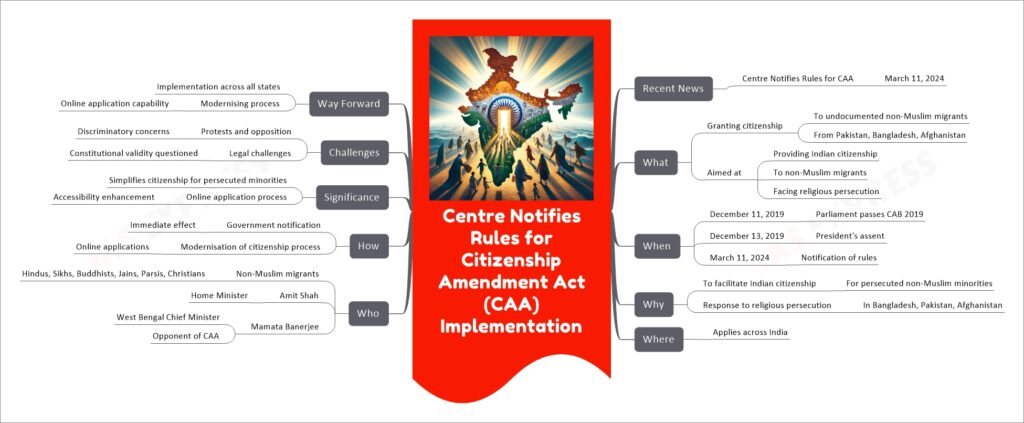
The Centre’s notification of rules for the Citizenship Amendment Act (CAA) on March 11, 2024, sets forth the framework for granting Indian citizenship to undocumented non-Muslim migrants from Pakistan, Bangladesh, and Afghanistan, facing religious persecution. This move comes after the act’s passage in December 2019 and amidst significant controversy and opposition, particularly regarding its perceived discriminatory nature. The CAA aims to simplify the citizenship process for persecuted non-Muslim minorities, including Hindus, Sikhs, Buddhists, Jains, Parsis, and Christians, and introduces an online application system to modernize and facilitate access to citizenship applications.
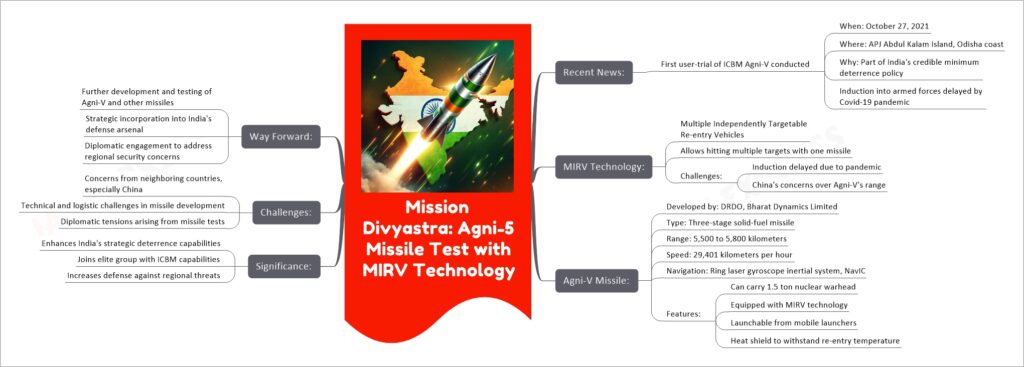
The recent test of the Agni-5 missile, dubbed Mission Divyastra, is a significant advancement for India’s defense capabilities. It represents the first user-trial of the intercontinental ballistic missile (ICBM) Agni-V, successfully conducted from APJ Abdul Kalam Island off the Odisha coast. This test is a crucial step toward the likely early induction of the system into the Indian armed forces, a process that was delayed due to the Covid-19 pandemic. The missile is equipped with Multiple Independently Targetable Re-entry Vehicle (MIRV) technology, allowing it to hit multiple targets with a single launch, making it more challenging to intercept than conventional missiles. With a range of 5,500 to 5,800 kilometers and capable of traveling at speeds 24 times faster than the speed of sound, Agni-V enhances India’s strategic deterrence capabilities and places the country among a select group of nations with advanced ICBM capabilities .
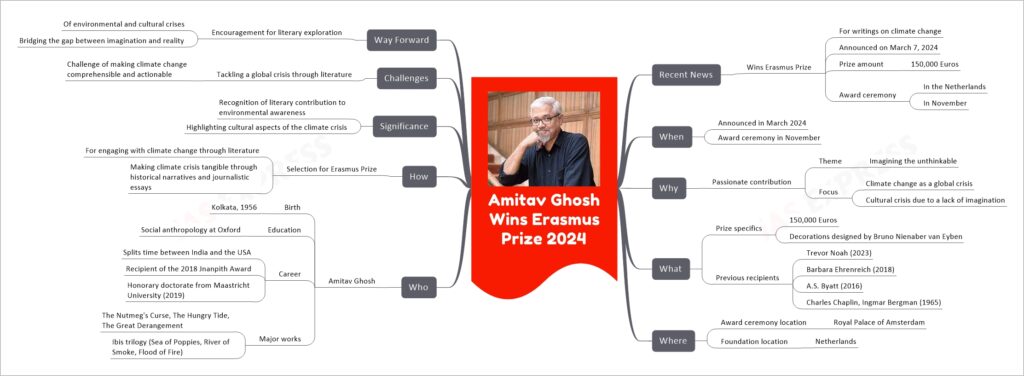
Amitav Ghosh, an Indian writer, has been awarded the prestigious Erasmus Prize for 2024, thanks to his profound engagement with the topic of climate change through his literary works. His efforts have been particularly noted for their passionate contribution towards “imagining the unthinkable,” where he addresses the unprecedented global crisis of climate change not just as an environmental challenge but also as a cultural one. By intertwining compelling historical narratives with journalistic essays, Ghosh has made significant strides in making the abstract issue of climate change more tangible and understandable. His works, including notable titles like “The Great Derangement” and “The Nutmeg’s Curse,” delve deep into the intricacies of climate change, its impact on humanity, and the urgent need for a collective cultural and imaginative response to this crisis.
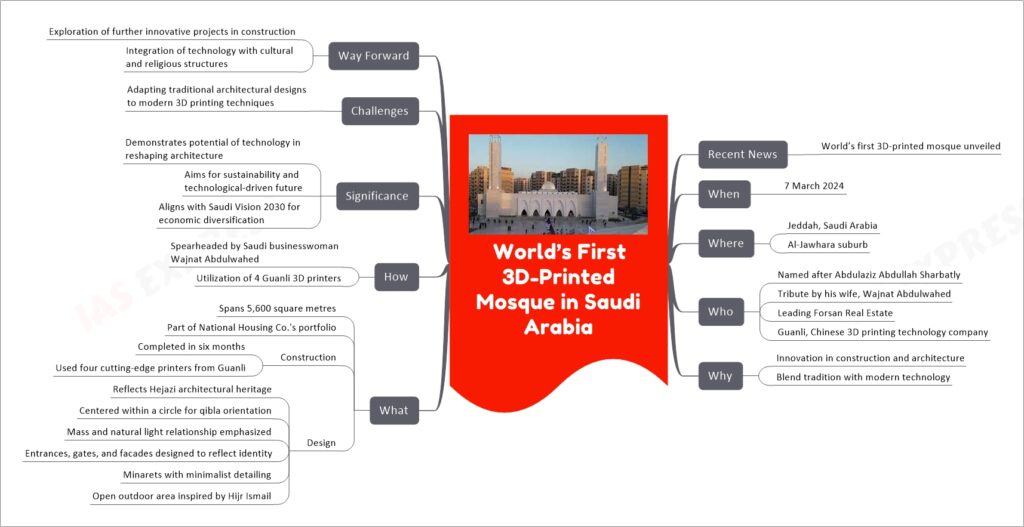
The world’s first 3D-printed mosque, unveiled in Jeddah, Saudi Arabia, marks a significant milestone in construction and architectural innovation. Named after Abdulaziz Abdullah Sharbatly, the mosque is a tribute by his wife, Wajnat Abdulwahed, and spans 5,600 square meters in the Al-Jawhara suburb. This project, completed in just six months using cutting-edge 3D printing technology from the Chinese company Guanli, demonstrates the vast potential of modern techniques to reshape traditional architectural practices. The design of the mosque, which reflects Hejazi architectural heritage, is centered within a circle for accurate orientation towards the qibla, with attention to the relationship between the building’s mass and natural light. This innovation aligns with Saudi Vision 2030’s objectives for economic diversification and represents a bold step towards a more sustainable and technologically-driven future.

The Dwarka Expressway, an under-construction 29.10 km long project, is set to become India’s first access-controlled 8-lane expressway, expected to be ready by April 2024. With the primary goal to decongest the National Capital Region (NCR) and reduce pollution levels, this ₹9,000 crore project extends through 18.9 km in Haryana and 10.1 km in Delhi. It’s designed to significantly cut down travel times between Dwarka in Delhi and Gurugram in Haryana, aiming to alleviate traffic congestion and improve overall connectivity. Managed by the National Highways Authority of India (NHAI) and receiving directives from Union Minister Nitin Gadkari, the expressway demonstrates a significant advancement in India’s infrastructure development.
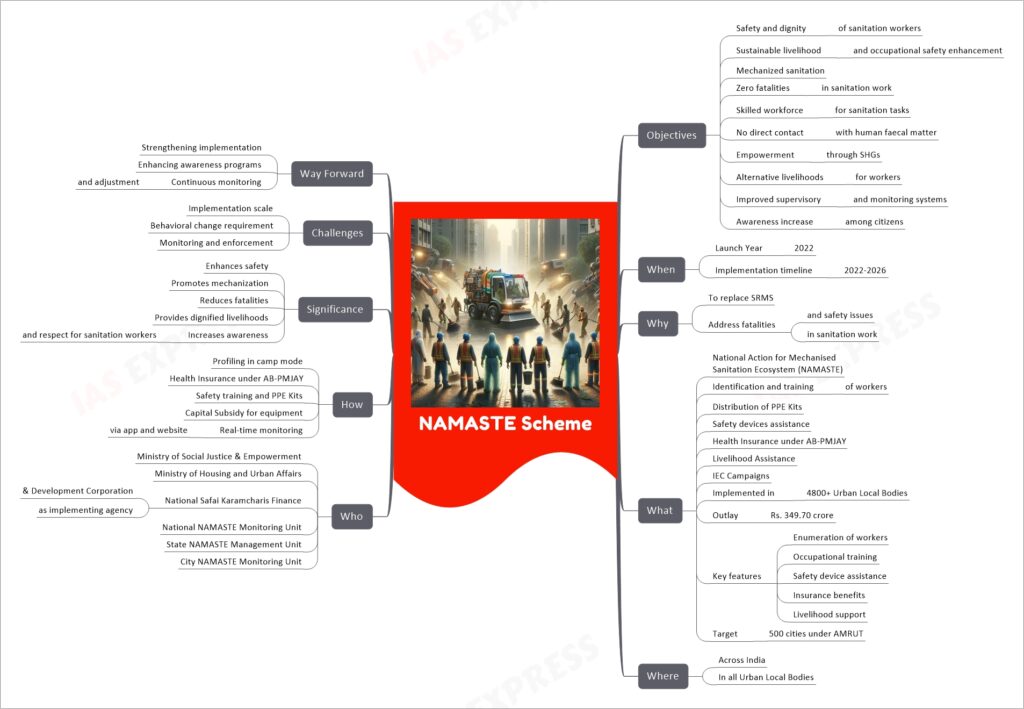
The NAMASTE Scheme, officially known as the National Action for Mechanised Sanitation Ecosystem, aims to ensure the safety and dignity of sanitation workers in India by promoting mechanized cleaning, providing occupational safety training, and enhancing their livelihood. Launched by the Ministry of Social Justice & Empowerment in 2022, the scheme intends to cover all urban local bodies across India with an outlay of Rs. 349.70 crore. It addresses the critical need for safer sanitation practices, reducing direct human contact with faecal matter, and aims to achieve zero fatalities in the sector. By equipping workers with necessary skills, protective gear, and offering health insurance, it seeks to transform the sanitation ecosystem into a safer, more dignified, and economically viable sector for its workforce.
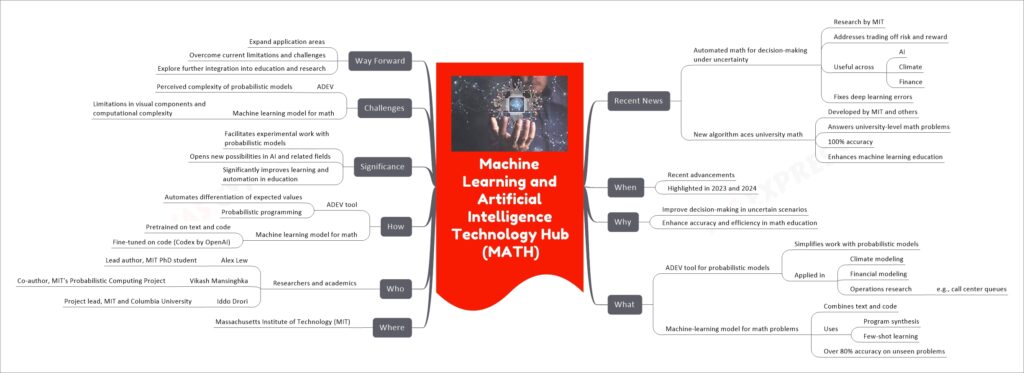
The Machine Learning and Artificial Intelligence Technology Hub (MATH) encompasses groundbreaking research and developments in automating decision-making under uncertainty, as well as enhancing the accuracy and efficiency of solving university-level mathematics problems. Recent advances from MIT have introduced tools like ADEV for simplifying the use of probabilistic models in various fields including climate modeling and financial modeling, and a new machine-learning model capable of solving and generating university math problems with high accuracy. These innovations underscore the potential of machine learning and AI to transform educational methodologies and improve decision-making processes in uncertain scenarios.
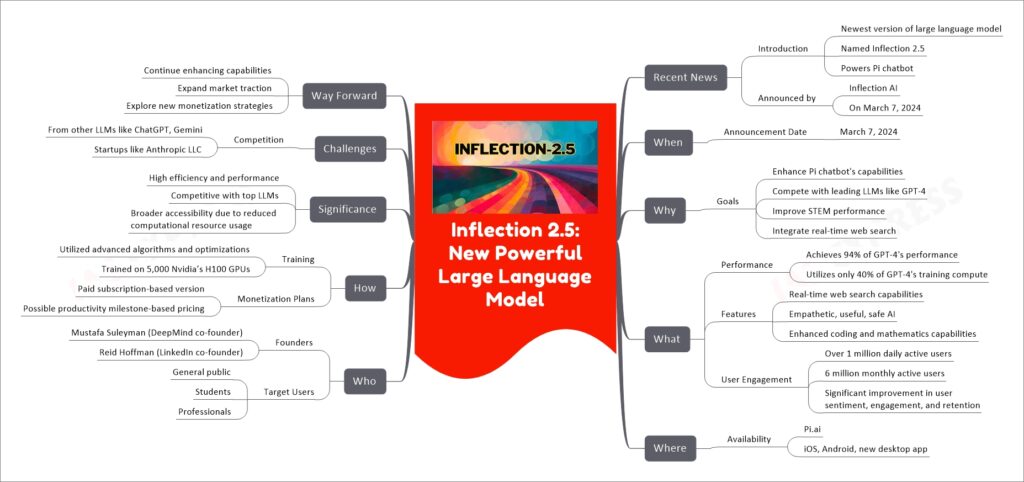
Inflection 2.5 is the latest version of the large language model developed by Inflection AI, aimed at powering the Pi chatbot to enhance its capabilities significantly. Announced on March 7, 2024, this model seeks to provide a highly efficient, versatile, and personal AI assistant capable of engaging users across a wide range of topics, from STEM subjects to casual conversations. It achieves nearly 94% of GPT-4’s performance while utilizing only 40% of the computational resources required for GPT-4’s training. With over one million daily and six million monthly active users, Inflection 2.5 has shown a marked improvement in user engagement and retention, signaling its potential to become a strong competitor in the AI space. It combines advanced algorithms and optimizations in model architecture with unique empathetic fine-tuning, setting a new standard for personal AI assistants.
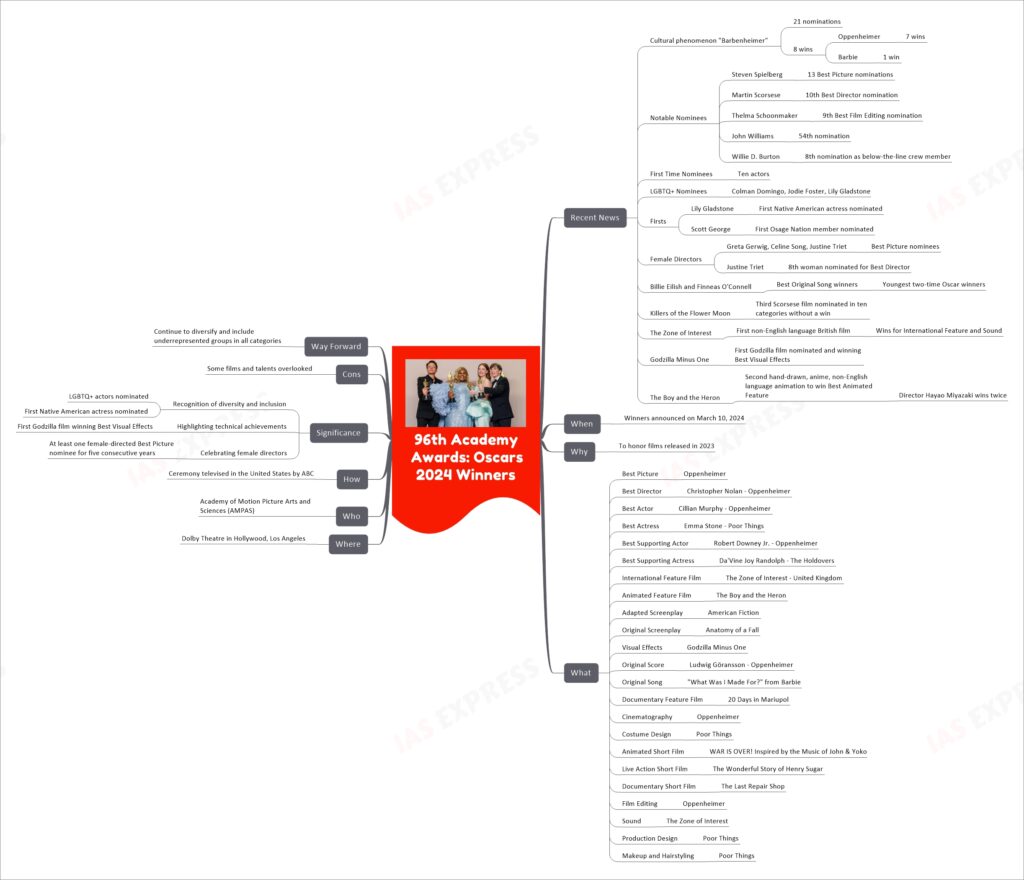
The 96th Academy Awards, celebrated for films released in 2023, took place on March 10, 2024. The event was marked by the dominance of “Oppenheimer,” which won seven awards, including Best Picture and Best Director for Christopher Nolan. This year highlighted the inclusion and recognition of diverse talents, with notable firsts such as the first Native American actress nominee, Lily Gladstone, and the first Osage Nation member nominated, Scott George. It also recognized female directors and celebrated the achievements of young talents Billie Eilish and Finneas O’Connell, who won Best Original Song. The awards underscored the film industry’s ongoing efforts toward diversity, inclusion, and recognition of outstanding achievements in cinema.
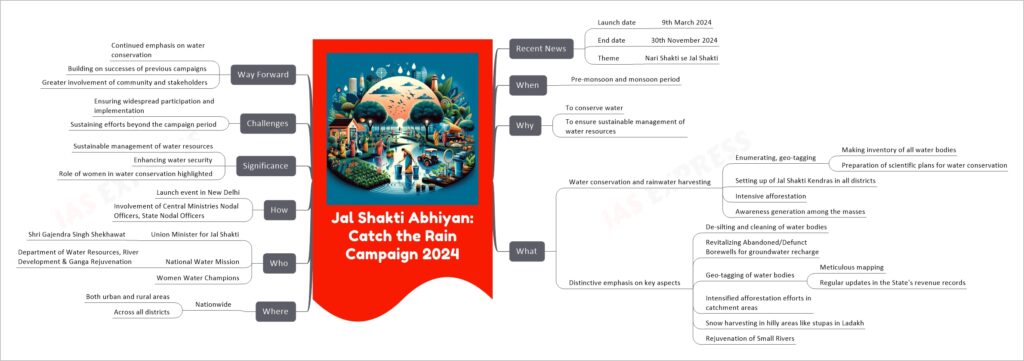
The Jal Shakti Abhiyan: Catch the Rain Campaign 2024 is a nationwide initiative launched by the Union Minister for Jal Shakti, Shri Gajendra Singh Shekhawat, focusing on water conservation and sustainable management of water resources. Running from March to November, this campaign encompasses both urban and rural areas across all districts, highlighting the role of women in water conservation with the theme “Nari Shakti se Jal Shakti”. It aims to involve a wide array of activities such as water conservation, rainwater harvesting, rejuvenation of water bodies, and afforestation, among others. The initiative seeks to engage community stakeholders, including Women Water Champions, in these efforts, emphasizing the significant role of women in this domain.
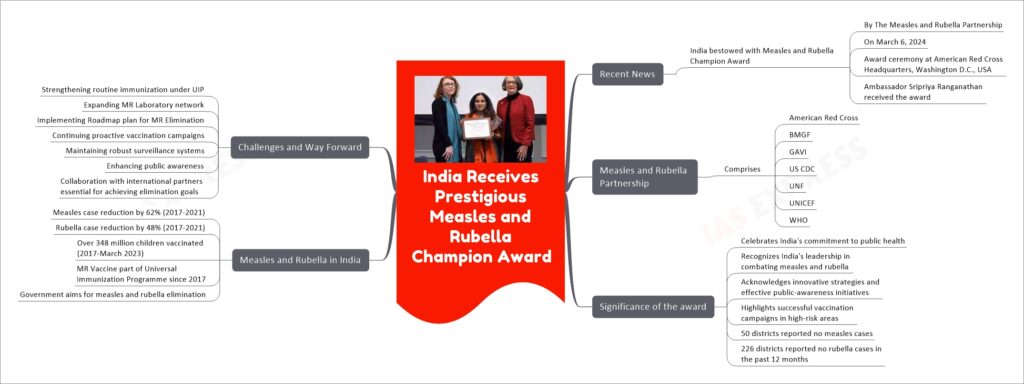
India has received the prestigious Measles and Rubella Champion Award in recognition of its exemplary efforts to combat these infectious diseases. The award was presented by The Measles and Rubella Partnership, a coalition of global health organizations, including the American Red Cross, BMGF, GAVI, US CDC, UNF, UNICEF, and WHO. This recognition comes as a result of India’s unwavering commitment to public health, demonstrated through a series of comprehensive interventions aimed at reducing the incidence of measles and rubella, including a nationwide vaccination campaign that has reached over 348 million children. These efforts have led to significant reductions in cases of both diseases and have been instrumental in preventing outbreaks, showcasing India’s leadership in global health and vaccination initiatives.
Following this achievement, it’s crucial for India to continue its proactive vaccination campaigns, surveillance efforts, and public awareness initiatives. Strengthening routine immunization under the Universal Immunization Programme (UIP), expanding the MR Laboratory network, and implementing the Roadmap plan for MR Elimination are key strategies moving forward. Collaboration with international partners will remain vital in the quest to achieve a world free from measles and rubella.

The Election Commission of India (ECI) is a constitutional body established in 1950, responsible for conducting and regulating elections throughout India. A significant change occurred in 1989 when the Election Commissioner Amendment Act was adopted, transforming the ECI into a multi-member commission to ensure more democratic decision-making and mitigate controversies and confrontations with the government. The commission operates under the authority of the Constitution, particularly Article 324, and the Representation of the People Act, to administer elections to the Lok Sabha, Rajya Sabha, state legislatures, and the offices of the President and Vice-President. It is served by a secretariat in New Delhi, with commissioners appointed by the President having a fixed tenure. While the commission plays a crucial role in maintaining electoral integrity, challenges such as the lack of prescribed qualifications for commissioners and the non-charge of administrative expenses on the Consolidated Fund of India have been identified.
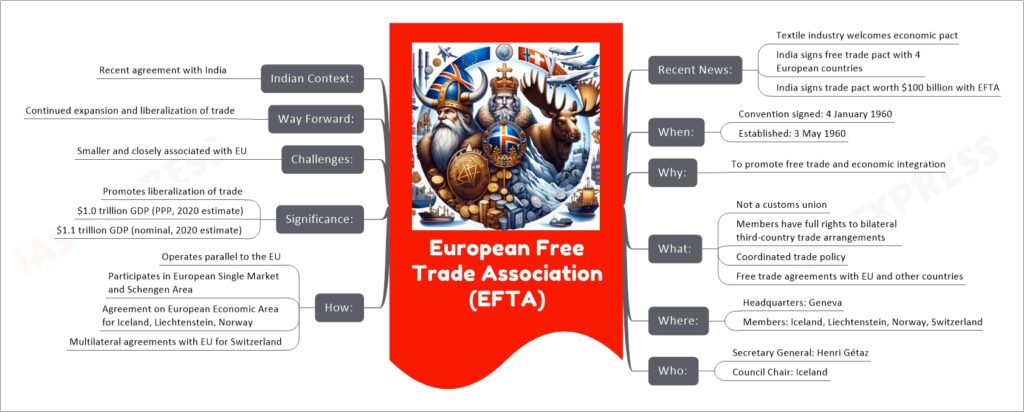
The European Free Trade Association (EFTA) is an intergovernmental organization composed of Iceland, Liechtenstein, Norway, and Switzerland. It was established in 1960 to promote free trade and economic cooperation among its members, within Europe and globally. EFTA is not a customs union, which means its member states retain full autonomy over their trade policies and can negotiate bilateral trade agreements with third countries. However, EFTA countries coordinate their trade policies and have concluded joint free trade agreements with the EU and other nations. While EFTA operates in parallel with the European Union, participating in the European Single Market and part of the Schengen Area, its members are not part of the EU Customs Union. The Association is significant for promoting the liberalization of trade, with its members having a combined GDP of around $1.0 trillion (PPP) or $1.1 trillion (nominal) as of 2020. EFTA has recently been in the news for signing a significant trade pact with India, showcasing its ongoing relevance and efforts to expand trade relations globally.
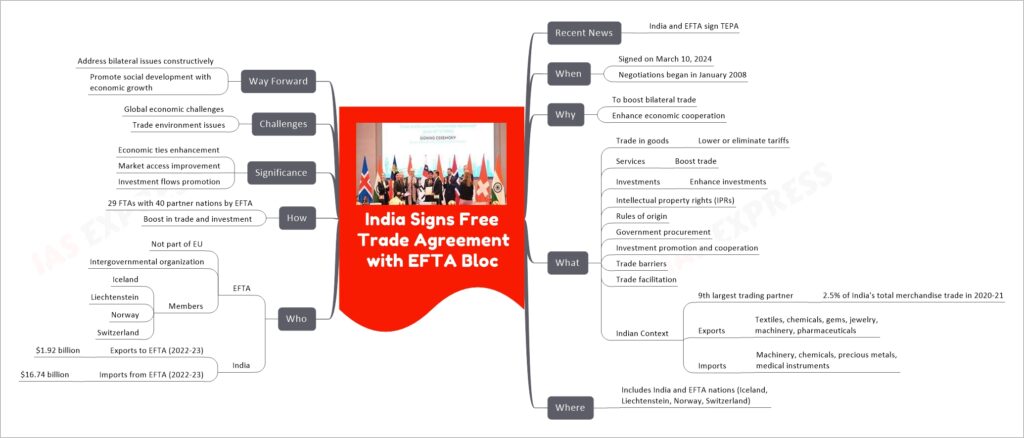
The free trade agreement between India and the EFTA (European Free Trade Association) bloc, specifically with Iceland, Liechtenstein, Norway, and Switzerland, marks a significant step towards enhancing bilateral trade and economic cooperation between India and these European countries. This agreement, officially known as the Trade and Economic Partnership Agreement (TEPA), aims to reduce tariffs and non-tariff barriers, promote investments, and increase market access for goods and services. The agreement covers a wide range of sectors including trade in goods and services, investment promotion, intellectual property rights, and more, aiming to boost economic ties and mutual investments. EFTA, while not part of the EU, serves as an important trade bloc, and the agreement is seen as a way to enhance India’s trade relations with these countries, ultimately fostering economic growth and job creation in both regions .

South African cheetah ‘Gamini’ has given birth to five cubs at Kuno National Park in Madhya Pradesh, India, marks a significant effort to restore the native cheetah population that became extinct in 1948. The project, initiated in 2022, has seen the importation of cheetahs from Namibia and South Africa. Despite challenges such as adaptation to local weather conditions and a notable mortality rate among the introduced cheetahs, the project aims to establish a self-sustaining wild cheetah population to aid in the conservation of grasslands and open ecosystems. The birth of three new cubs to the Namibian cheetah Aasha in December is a positive sign of the project’s potential success.
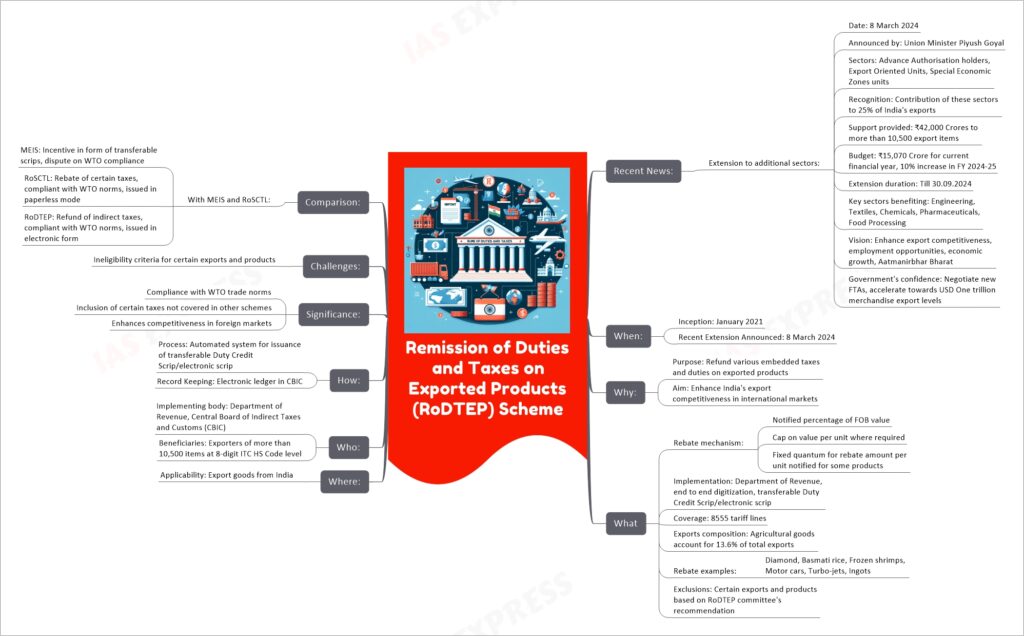
The Remission of Duties and Taxes on Exported Products (RoDTEP) Scheme, introduced by the Government of India in January 2021, aims to enhance India’s export competitiveness by refunding various embedded taxes and duties on exported products. Recently, it was extended to additional sectors such as Advance Authorisation holders, Export Oriented Units, and Special Economic Zones units, acknowledging their significant contribution to India’s exports. The scheme operates through an automated system, providing rebates on more than 10,500 export items at the 8-digit ITC HS Code level, and is in compliance with WTO trade norms, aiming to provide a level playing field for domestic players in the international market.
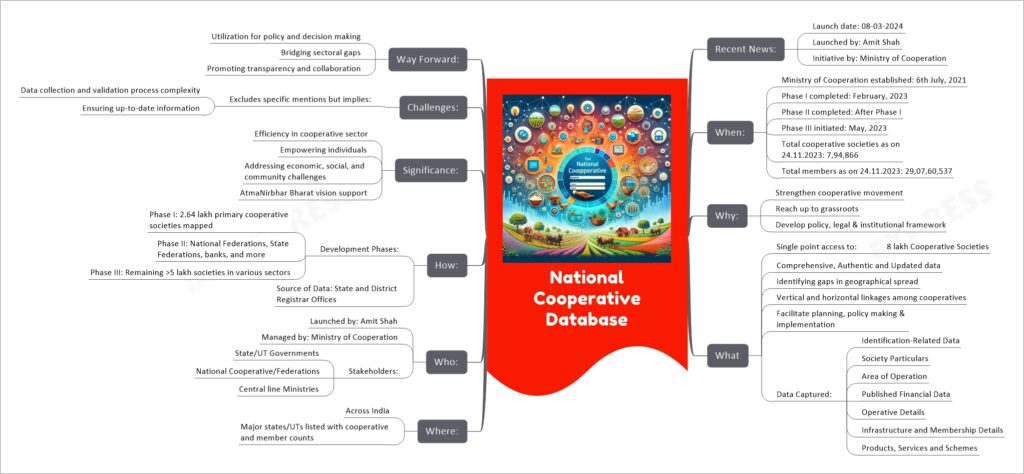
The National Cooperative Database (NCD) was launched by Amit Shah on March 8, 2024, as a key initiative by the Ministry of Cooperation established in July 2021. This comprehensive database aims to strengthen the cooperative movement in India by providing single-point access to information on about 8 lakh cooperative societies across various sectors, facilitating better planning, policy-making, and implementation. Developed in a phased manner, it encompasses data on society particulars, operation areas, financial data, and more, gathered from State and District Registrar Offices. The database serves as a crucial tool for enhancing the efficiency of the cooperative sector, promoting expansion, and addressing community challenges towards realizing the vision of an ‘AtmaNirbhar Bharat’.
If you like this post, please share your feedback in the comments section below so that we will upload more posts like this.
